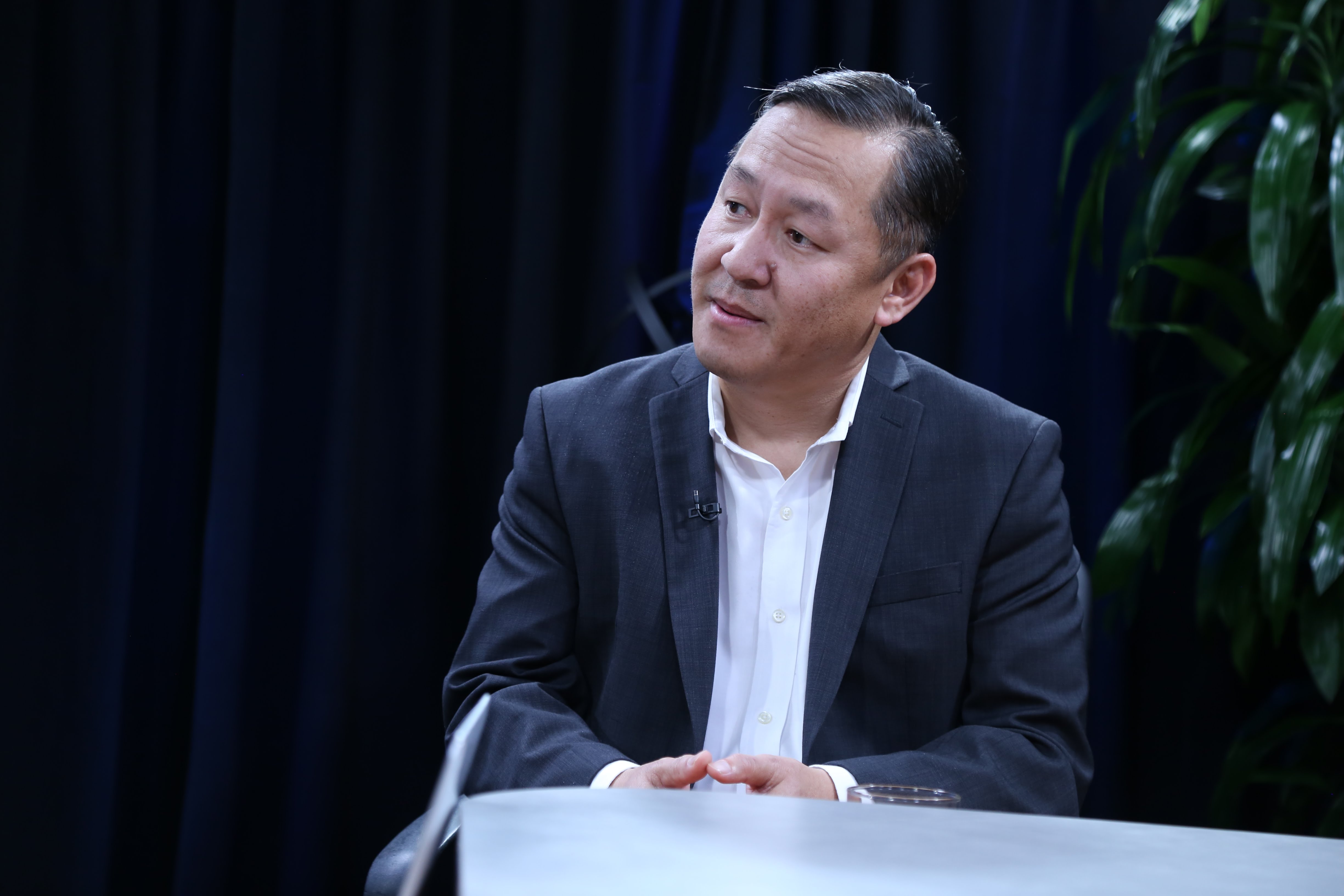 INFRA
INFRA
 INFRA
INFRA
 INFRA
INFRA
Companies are charging through their digital transformations to enable data-driven approaches that can provide a competitive edge in their products or operations. As more data is brought online and the complexity of an operating environment increases, however, the rise of the darknet information exchanges that connect threat actors with targets has dramatically increased organizational vulnerability to attack and risk.
“What we’ve seen consistently has been the acceleration of the volume, the complexity, and the variety of cyber threats. Ten years ago, 2007 or so, there were about 500 threat factors. Today we’re north of 5,000,” said Jonathan Nguyen-Duy (pictured), vice president of strategy and analytics at Fortinet Inc., a cybersecurity and malware protection company.
Nguyen-Duy spoke with John Furrier (@furrier), host of theCUBE, SiliconANGLE Media’s mobile livestreaming studio, at theCUBE’s studio in Palo Alto, California, to discuss the increasing state of complexity in the cybersecurity world and Fortinet’s approach to managing this complexity. (* Disclosure below.)
The exponential growth of connected devices and services in a digital transformation enables business operations teams to push productivity to new limits, but it comes at a cost in information security. Cybersecurity teams are inundated with the complexity of managing new connected devices, multiple-computing environments, third-party technology integrations, and disparate security solutions, according to Nguyen-Duy.
“No one knows if the devices are properly configured. No one has actually done the third-party technology integration. No one has actually met the requirements that we’d employ three years ago. … I think at the heart of that complexity, that’s reflected in the fact that we’re missing the basic elements in security,” Nguyen-Duy said.
The complexity in operating environments means that opportunities to address known threats can slip through the cracks. The large data attacks from nation-states and hackers alike didn’t succeed because of advanced malware. They simply exploited weaknesses in a company’s infrastructure.
“These were known vulnerabilities. The patches existed. They weren’t patched. In my experience, 80 percent of all the attacks could be mitigated through simple to intermediate controls,” Nguyen-Duy stated.
Even operations seemingly as simple as patch management can be overwhelming for security teams. Dynamic development and operations environments can make bringing mission-critical applications offline for patching nearly impossible.
“If our current teams are so overwhelmed that they cannot mitigate known attacks, exploits against known vulnerabilities, how are they going to be able to grapple with the complexity of managing zetabytes of data with an ecosystem that spans around the world, that operates in milliseconds?” Nguyen-Duy said.
One company role is becoming increasingly more important in the cybersecurity age: the chief information security officer, according to Nguyen-Duy. The CISO must balance the growth and productivity needs of the business with the security and risk management aspects of cybersecurity. Starting with third-party, certified best practices and implementation and leveraging best-in-class products that have gone through rigorous clearances help provide a fabric of security around applications.
“You’re going to need a partner who has a global infrastructure of telemetry to understand what’s happening in real time, in the wild. And once you collect that data, you’re going to need to have intelligence analysts, researchers, that can put into context what that data means, because data doesn’t become information on its own,” Nguyen-Duy concluded.
Watch the complete video interview below, and be sure to check out more of SiliconANGLE’s and theCUBE’s CUBE Conversations. (* Disclosure: Fortinet Inc. sponsored this segment of theCUBE. Neither Fortinet nor other sponsors have editorial control over content on theCUBE or SiliconANGLE.)
Support our mission to keep content open and free by engaging with theCUBE community. Join theCUBE’s Alumni Trust Network, where technology leaders connect, share intelligence and create opportunities.
Founded by tech visionaries John Furrier and Dave Vellante, SiliconANGLE Media has built a dynamic ecosystem of industry-leading digital media brands that reach 15+ million elite tech professionals. Our new proprietary theCUBE AI Video Cloud is breaking ground in audience interaction, leveraging theCUBEai.com neural network to help technology companies make data-driven decisions and stay at the forefront of industry conversations.